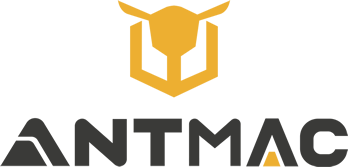Dual-Chain Telescopic Boom System: Why It’s Superior for Truck-Mounted Aerial Work Platforms
Step onto any bustling industrial site—whether it’s a chemical plant retrofit, highway bridge upkeep, or factory roof repair—and you’ll see the backbone of high-altitude work: the truck-mounted aerial work platform. But what makes one unit a workhorse and another a liability? Look no further than the telescopic boom. For years, steel wire rope booms were the only option, but a quieter innovation has been winning over crews: the dual-chain telescopic boom (a key feature in our Telescopic Boom Lift series).
This isn’t just a tweak to existing design—it’s a complete rethink of how booms handle the grit of industrial work: heavy loads, constant use, and unpredictable conditions. Unlike steel wire rope booms that wear out silently or fail without warning, the dual-chain telescopic boom brings transparency, backup safety, and ruggedness to every lift. Let’s break down why maintenance teams, project foremen, and fleet managers are making the switch—and why your operation should too.
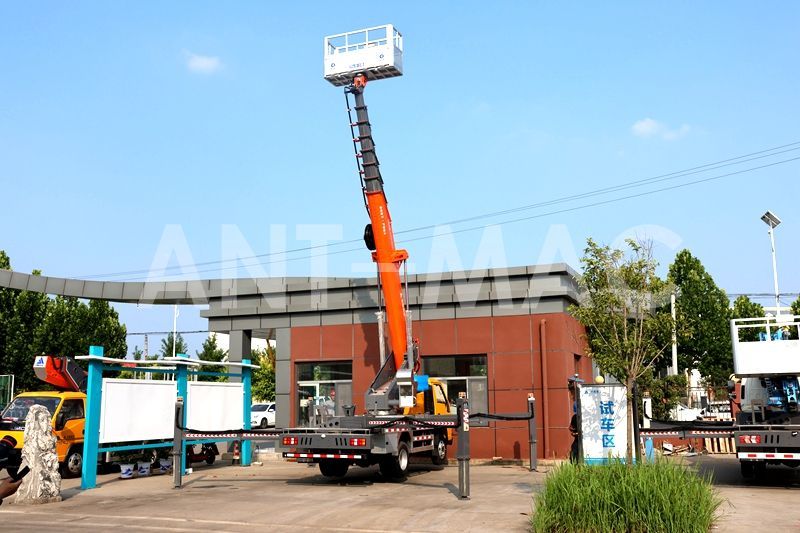
1. The Hidden Danger of Steel Wire Rope: Undetected Wear That Kills Performance
Pull aside any operator who’s run aerial lifts for 5+ years, and they’ll tell you their biggest pet peeve with steel wire rope booms: wear you can’t see until it’s too late. Steel wire ropes are made of hundreds of tiny woven strands, and every hoist, stretch, and bend chips away at those strands—fraying them, snapping them, and weakening the whole rope. The worst part? That damage hides beneath the surface. A rope that looks fine to the eye could snap mid-lift, sending tools crashing or putting operators at risk of deadly falls.
The dual-chain telescopic boom erases this hidden risk entirely. Its design uses two side-by-side chains made of high-strength alloy steel—each link forged and heat-treated to handle nonstop stress. Unlike steel wire rope, every chain link is out in the open, so inspectors can spot wear, rust, or damage in seconds during routine checks. Even more critical: the dual-chain setup splits weight evenly across both chains, avoiding the pinpoint pressure that snaps steel wire ropes.
Real-world data tells the story: after 10,000 lift cycles, dual-chain systems still hold 90% of their original load capacity. Steel wire rope booms? They drop to 70% or less—meaning crews have to lighten loads or risk failure.
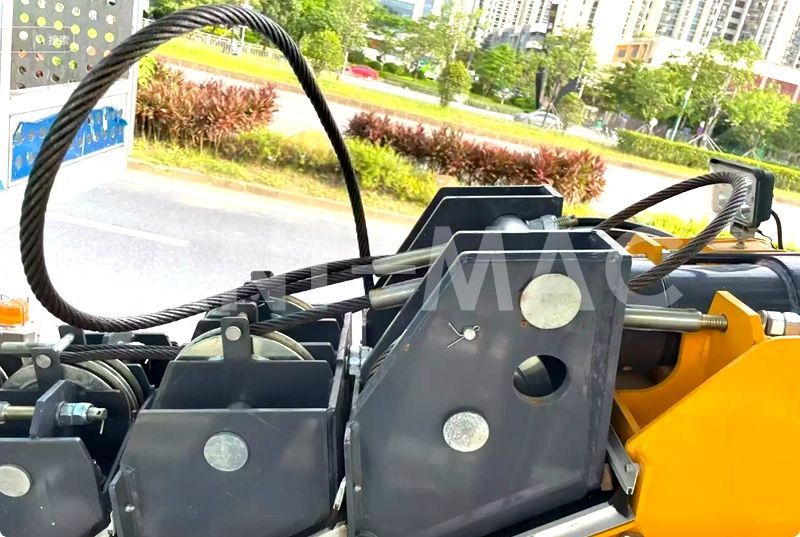
2. Heavy-Duty Performance: Haul More, Stay Steady, Finish Faster
Industrial work doesn’t wait for equipment to catch up—and neither should your boom. Truck-mounted aerial work platforms regularly need to carry 2-3 crew members plus welding gear, replacement parts, or small machinery up to 30+ meters. Steel wire rope booms stumble here: their single-rope design sways in wind, bends under weight, and caps how much you can safely haul. That means more trips up and down, slower work, and frustrated crews.
That dual-chain backup isn’t just a “nice-to-have”—it’s the reason crews can take on tough jobs without cutting corners. Take a recent bridge repair in Texas: crews used a truck-mounted aerial work platform with a dual-chain telescopic boom to lift a 400kg welding machine and two operators 35 meters up. Even with 15mph winds, the boom didn’t budge—steady enough to weld precision joints. The team finished the job in one shift. With a steel wire rope boom? They would’ve needed two trips or stabilizing gear, adding a full day to the project.

3. Maintenance That Doesn’t Stop Work: Save Hours and Cash
Downtime on an industrial site costs big—sometimes $1,000+ per hour. Steel wire rope booms are downtime magnets: they need monthly greasing, twice-weekly fray checks, and full replacements every 3 months. Swapping a single rope takes 3-4 hours (not counting labor and parts costs), and if a frayed spot slips past inspection? You’re shutting down the whole site until it’s fixed.
The dual-chain telescopic boom (like those in our Boom Lift series) turns maintenance from a headache into a quick check. Its open design lets inspectors glance over every link in 5 minutes—no taking apart panels or using special tools. Routine care is even simpler: wipe down the chains and add a light lube every 3 months, a task that takes less than 20 minutes. And the kicker? Dual-chain systems last 2-3x longer than steel wire rope booms. A steel wire rope needs replacing every 6-12 months; dual-chain setups go 2-3 years before needing attention.
For fleet managers, that’s real savings. A company with 10 aerial lifts could cut maintenance costs by $50,000+ a year switching to dual-chain. “We used to have a tech dedicated just to boom maintenance,” says a fleet manager for a national industrial service firm. “Now that tech handles three times as many machines because dual-chain is so low-fuss. It’s freed up our team to focus on actual work, not fixing ropes.”
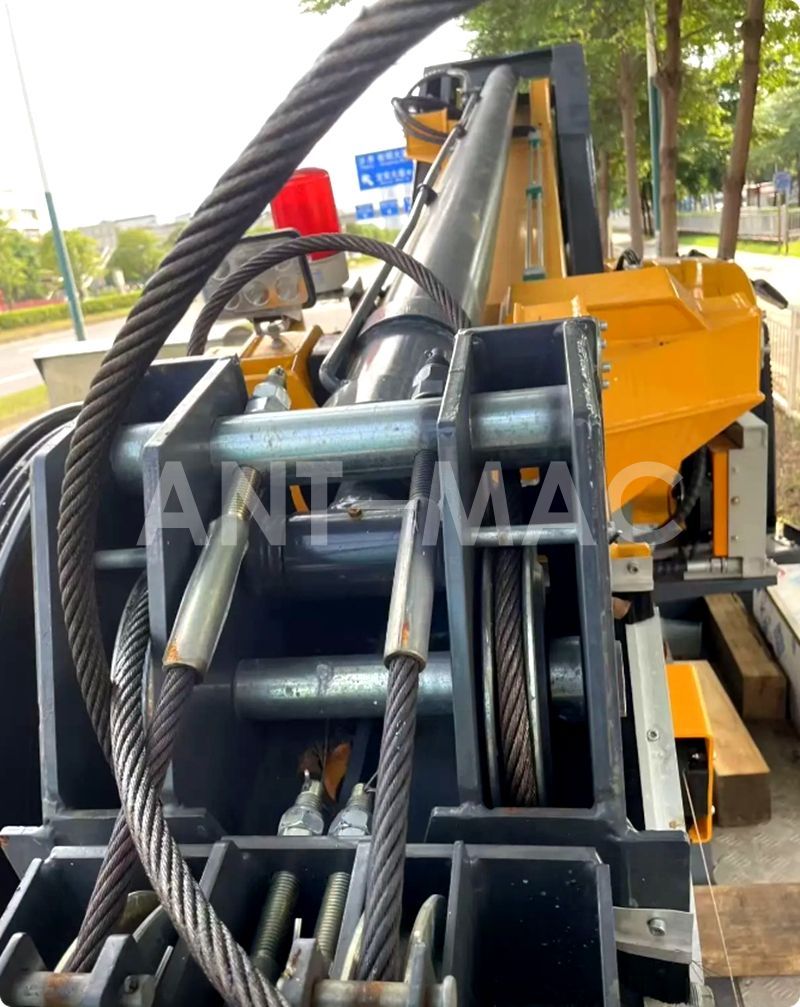
4. Safety Compliance: Check Every Box for Global Standards
Industrial aerial lift safety isn’t optional—it’s regulated by strict rules like Europe’s EN 280 and North America’s ANSI A92. These standards demand “fail-safe” designs, consistent performance, and easy-to-check safety features. Steel wire rope booms often fall short: to meet compliance, you need add-ons like backup ropes or tension sensors, which just add more parts that can break.
The dual-chain telescopic boom is built to pass inspections on the first try. Its two-chain design meets “fail-safe” rules by default—no extra parts needed. Automatic tensioners keep chains tight (slack is a top cause of steel wire rope accidents), and wear indicators on each link light up when parts need a look. These features don’t just help you check boxes—they protect your crew and cut liability.
A European chemical plant recently switched to dual-chain to meet EN 280 standards. “Our old steel wire rope booms failed inspections constantly because of hidden wear,” says their safety director. “The dual-chain booms passed right away, and we haven’t had a single safety incident. Inspectors love that they can see every link—no more digging through maintenance logs to prove we’re compliant.” For companies expanding globally, that compliance edge means no delays getting into strict markets.
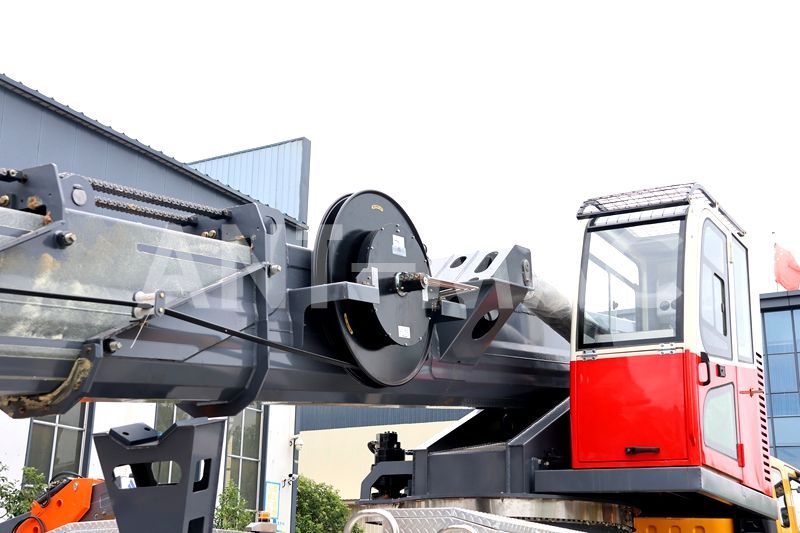
5. Tough Enough for Any Site: Beat Rust, Dust, and Corrosion
Industrial sites are brutal on equipment: coastal refineries with salt air, construction zones thick with dust, chemical plants with corrosive fumes. Steel wire rope booms crumble here: rust eats through strands, dust clogs the weave, and before you know it, you’re replacing the rope again. A steel wire rope boom in a coastal area might last just 6 months.
The dual-chain telescopic boom is built to outlast these harsh conditions. Each chain has a zinc-nickel alloy coating that fights rust and corrosion, and the sprockets are stainless steel—so dust and debris just brush off. We visited a Louisiana coastal refinery where dual-chain booms have been running for 3 years: they still move like new. The steel wire rope booms they replaced? Rusted solid after 8 months.
“Salt air kills most equipment here,” says the refinery’s maintenance lead. “We used to change steel wire ropes every 6 months, and even then, corrosion caused snags. The dual-chain booms don’t have a single rust spot—even in our wettest areas. They’re built tough, which is exactly what we need.”
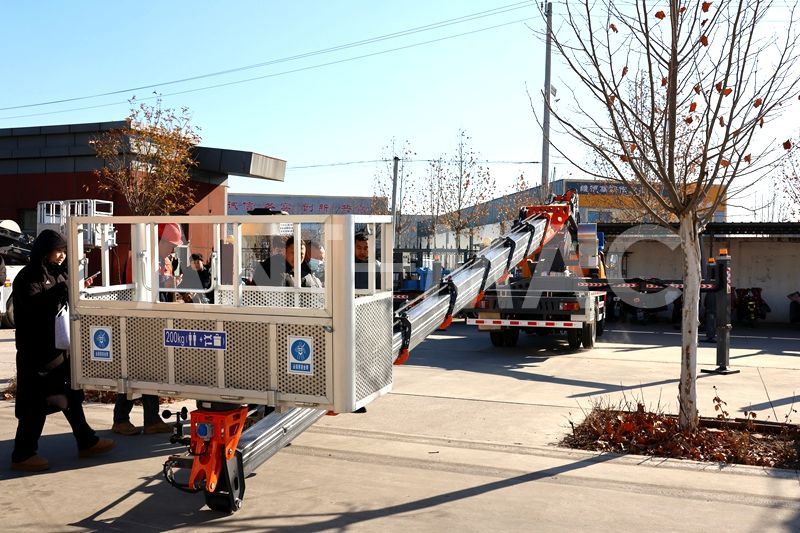
Conclusion: Invest in Performance That Lasts
The dual-chain telescopic boom isn’t just a better option for truck-mounted aerial work platforms—it’s a smarter investment in your team’s safety, your project’s speed, and your bottom line. By wiping out hidden steel wire rope wear, hauling more without swaying, cutting maintenance time, meeting global safety rules, and standing up to harsh sites, it solves the problems that actually slow industrial teams down.
If you’re a procurement manager tired of unexpected equipment failures, a fleet director looking to slash maintenance costs, or a safety leader who puts crew protection first, the dual-chain telescopic boom is the clear pick. Explore our full range of durable Boom Lifts and other reliable solutions like Scissor Lifts and Vertical Lifts on our Products page.
It’s not flashy—just a rugged, reliable tool that gets the job done, day in and day out. As industrial work gets more demanding, the dual-chain telescopic boom is proving it’s not just an upgrade—it’s the future of high-altitude industrial work.
Ready to upgrade your equipment? Contact us today to learn more and get a quote.
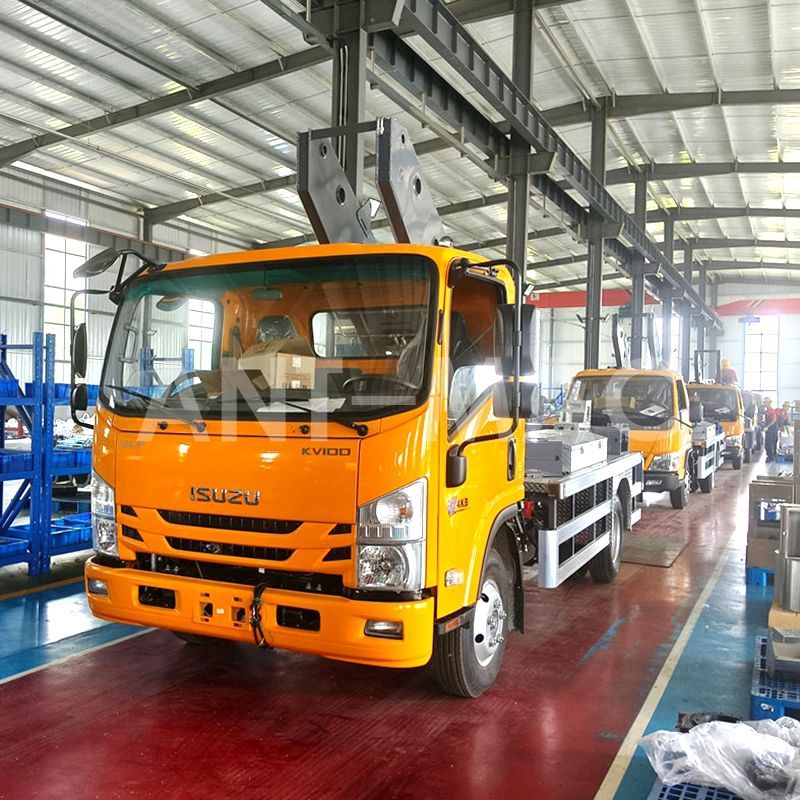 Dual-Chain Telescopic Boom Sys
Dual-Chain Telescopic Boom Sys
 Russian
Russian